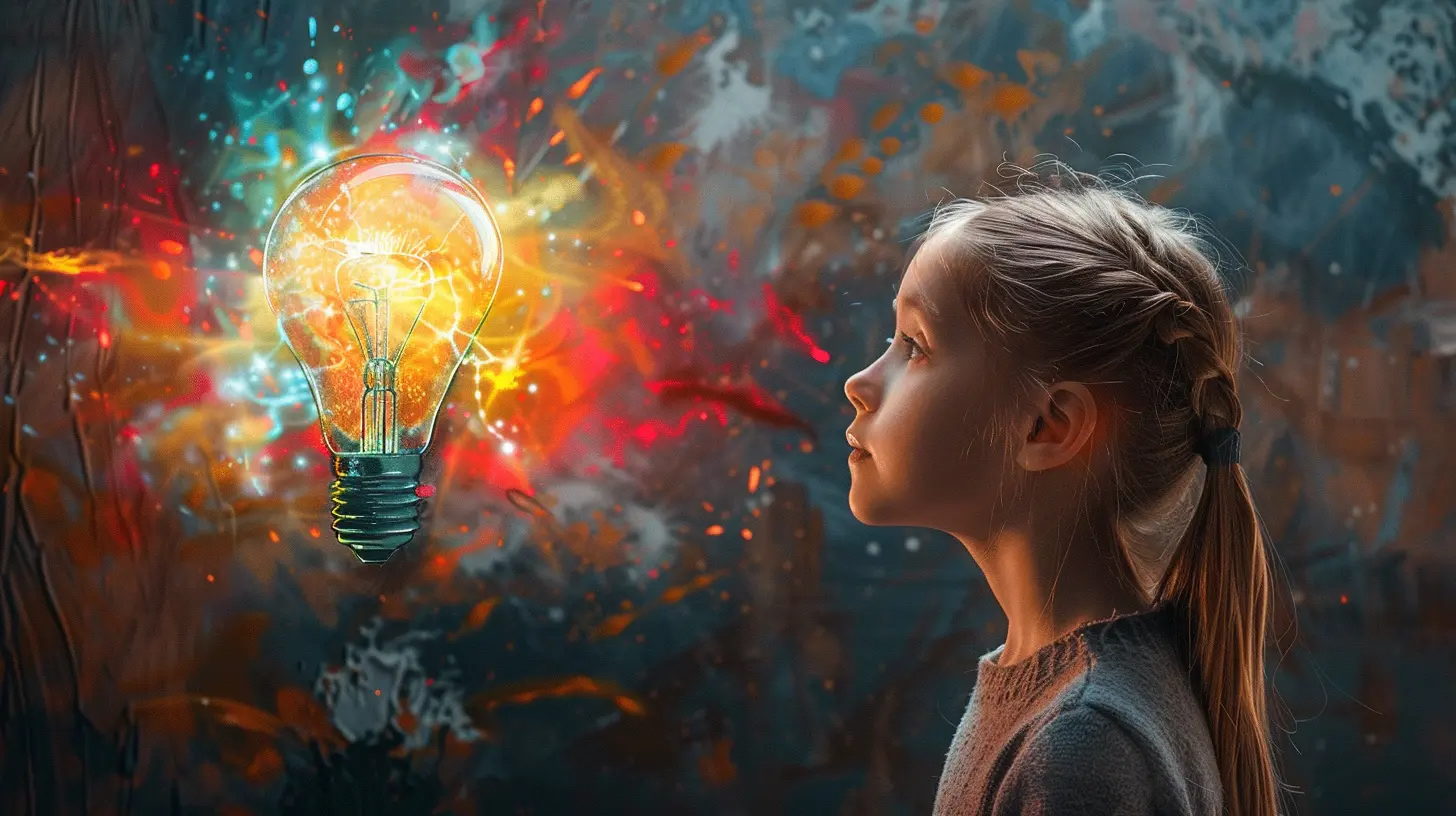Unlocking Creativity in STEM Education
2 October 2025
Introduction
When we think about STEM (Science, Technology, Engineering, and Mathematics), we often picture rigid formulas, strict methodologies, and a lack of creative freedom. But what if I told you that creativity is the secret ingredient that takes STEM to the next level?
Creativity isn’t just for artists and writers—it’s the fuel behind groundbreaking scientific discoveries, innovative engineering solutions, and mind-blowing technological advancements. Without creativity, we'd still be stuck in the Stone Age, chiseling ideas onto cave walls.
So, how do we unlock creativity in STEM education? How do we encourage students to think beyond the numbers, formulas, and codes? Buckle up because we're about to dive deep into the mysterious world of creative STEM learning. 
The Myth of Logic vs. Creativity
There's a common misconception that STEM fields are all about logic and precision, while creativity belongs to the world of art and literature. But that couldn’t be further from the truth.Think about legendary inventors like Leonardo da Vinci—was he just a scientist? No. He was an artist, engineer, and mathematician all rolled into one. Or take Albert Einstein, who famously said, _"Imagination is more important than knowledge."_ These pioneers pushed boundaries because they dared to think creatively within their scientific pursuits.
The real magic happens when logic and creativity collide, producing ideas that revolutionize industries. So, why should we create artificial barriers between them in education? 
Why Creativity is Essential in STEM
1. Problem-Solving Beyond the Obvious
STEM challenges don’t always have clear-cut solutions. Sometimes, thinking outside the box is the only way to crack a tough problem. Whether it’s designing a sustainable city or coding an AI assistant, creativity drives problem-solving.2. Bridging the Gap Between Theory and Reality
Let’s be honest—memorizing formulas can be mind-numbing. But when students apply those formulas in unique ways, they suddenly make sense. Creativity turns dull equations into real-world applications, making STEM subjects more engaging and meaningful.3. Innovation and Future-Readiness
The future belongs to those who innovate. Whether it’s developing renewable energy solutions, designing self-driving cars, or creating medical breakthroughs, STEM professionals must think beyond the conventional. Creativity gives students an edge in a rapidly evolving technological landscape.
How to Unlock Creativity in STEM Education
So, how do we break the mold and inject creativity into STEM learning? Here are some strategies that can make a world of difference.1. Encourage Curiosity and "What If" Thinking
Ever noticed how kids ask endless "why" and "what if" questions? That’s creativity in action! Instead of shutting down unconventional ideas, teachers should nurture curiosity. What if gravity worked differently? What if we built homes out of biodegradable materials? These questions spark innovative thinking.2. Hands-On Learning Through Experiments
Nothing kills creativity faster than passive learning. Instead of just reading about electricity, why not let students build their own simple circuits? Hands-on projects make learning immersive, engaging, and, most importantly, fun!3. Cross-Disciplinary Collaboration
Who says STEM has to be separate from art or music? Encouraging students to blend disciplines can lead to astonishing creativity. For example, using mathematical patterns in music composition or designing 3D-printed sculptures using engineering software. Creativity thrives at the intersection of different fields.4. Gamification and Play-Based Learning
Gamifying STEM can drive engagement and creativity. Coding challenges, robotics competitions, and puzzle-based problems push students to think critically while having fun. Remember, even Einstein played puzzles to stimulate his mind!5. Project-Based Learning Over Rote Memorization
Tests and quizzes have their place, but they don’t inspire innovation. Instead, project-based learning encourages students to develop original ideas, conduct experiments, and present their findings—just like real-world scientists and engineers.6. Failure as a Stepping Stone to Innovation
One of the biggest barriers to creativity is the fear of failure. In STEM, failure isn’t the end—it’s a step toward discovery. Schools should promote a culture where trial and error are embraced, allowing students to learn from mistakes rather than fear them.7. Use Technology to Foster Creativity
Technology isn't just a tool; it's a playground for creativity. Virtual reality (VR) for immersive simulations, AI-driven coding projects, and 3D printing for prototyping give students unlimited potential to explore and innovate.8. Encourage Storytelling in STEM
Science and storytelling aren’t opposites—they complement each other. When students craft narratives around scientific discoveries or engineering feats, they develop a deeper connection with the material. Think of how space exploration stories captivate minds and inspire future astronauts.
Real-World Examples of Creativity in STEM
1. The Wright Brothers and the Birth of Flight
Building the first airplane wasn’t just about mechanics and physics—it was about imagining the impossible. Orville and Wilbur Wright didn’t just follow existing theories; they experimented, failed, and reimagined aviation until they succeeded.2. Steve Jobs and Apple’s Innovative Designs
Steve Jobs knew that engineering alone wasn’t enough. He blended technology with design, creating aesthetically pleasing yet powerful devices. His approach was the perfect intersection of creativity and STEM.3. The Mars Rover and Space Exploration
Sending a rover to Mars isn’t just about crunching numbers—it requires innovative problem-solving. NASA engineers had to think creatively to design a machine that could survive extreme conditions and send valuable data back to Earth.4. Marie Curie’s Groundbreaking Scientific Discoveries
Marie Curie didn’t just follow traditional research methods—she innovated them. Her groundbreaking work on radioactivity was the result of creative thinking and perseverance.The Future of Creativity in STEM Education
The future of STEM isn't about memorizing facts or following rigid instructions. It’s about innovation, problem-solving, and thinking differently. As technology advances, the demand for creative minds in STEM will only grow.Educators, parents, and policymakers must recognize that creativity isn’t an add-on—it’s a necessity. By fostering an environment that encourages curiosity, experimentation, and interdisciplinary learning, we can prepare students for a world where ingenuity is key.
Conclusion
Unlocking creativity in STEM education isn’t just possible—it’s essential. The greatest discoveries and technological advancements were born out of creative thinking, not just rigid formulas.If we want the next generation to build flying cars, cure diseases, and explore distant planets, we need to start nurturing their creativity today.
So, let's stop treating STEM and creativity as separate entities. Let’s embrace the fusion of logic and imagination because that’s where true innovation happens.
Who knows? The next groundbreaking idea could be sparked in your classroom.
all images in this post were generated using AI tools
Category:
Creativity In EducationAuthor:

Eva Barker
Discussion
rate this article
1 comments
Phoenix Fletcher
Great article! I love how you highlighted the importance of creativity in STEM education. Encouraging imaginative thinking can truly enhance problem-solving skills and inspire future innovators!
October 18, 2025 at 4:37 AM

Eva Barker
Thank you for your kind words! I'm glad you found the article valuable. Creativity is indeed essential for driving innovation in STEM!


